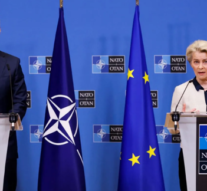
Optimizing the critical infrastructure (CI) protection: the EU-NATO Task Force on CI Resilience
Economy 28 April 2023Estimated time of reading: ~ 3 minutes
Senior officials from NATO and the European Union met on Thursday (16 March) to launch a new NATO-EU Task Force on Resilience of Critical Infrastructure (hereinafter “TF”). The launch of the TF comes at a time when cooperation to strengthen critical infrastructure has become even more important in light of recent events, such as the sabotage against the Nord Stream pipelines and Russia’s weaponisation of energy as part of its war against Ukraine.
The TF aims to enhance cooperation between the EU and NATO in the protection of critical infrastructure and to address vulnerabilities in critical infrastructure. Its work will focus on information sharing, risk assessment, standards and certification, and research and development. Information sharing will be a key area of focus for the task force. The sharing of information on cyber threats, physical security risks, and emerging risks to critical infrastructure will be essential in ensuring that member states are able to respond quickly and effectively to security incidents. Newly launched TF will initially focus on four key sectors: energy, digital infrastructure, transport, and space.
In light of recent events, such as the sabotage against the Nord Stream pipelines and Russia’s weaponisation of energy, it is more important than ever that member states work together to enhance the resilience of critical infrastructure. Not many states across the globe stand together when it comes to protection of critical infrastructure. As the EU seems to be one of the leaders in this endeavours globally, it is a vital initiative that aims to enhance cooperation between the EU and NATO in the protection of critical infrastructure. Its work in information sharing, risk assessment, standards and certification, and research and development will help to ensure that critical infrastructure remains resilient in the face of emerging threats and especially of the ongoing war in Ukraine.
It is hard to assess the total costs of this TF but the costs of not adequately protecting critical infrastructure can be even greater. Disruptions to critical infrastructure can result in significant economic consequences, including lost productivity, supply chain disruptions, and increased costs for businesses and consumers. For example, the sabotage against the Nord Stream pipelines has led to disruptions in the supply of natural gas to Europe, resulting in higher prices and reduced availability. Similarly, cyber attacks on digital infrastructure can result in data breaches, loss of intellectual property, and other costly consequences.
Written by: Nenad Stekić


